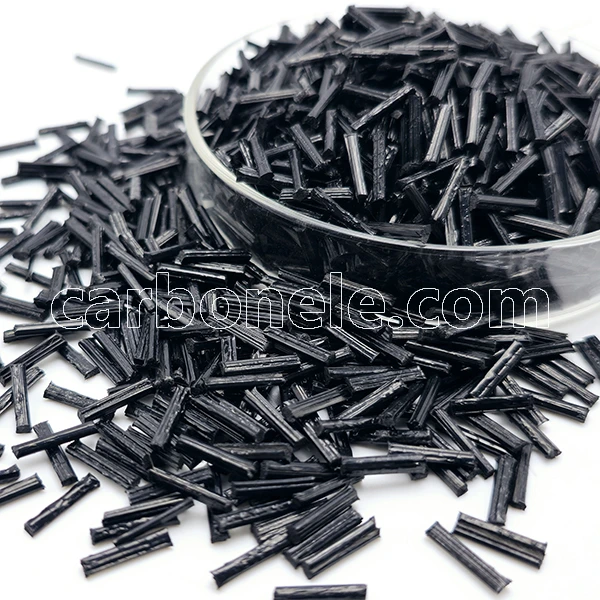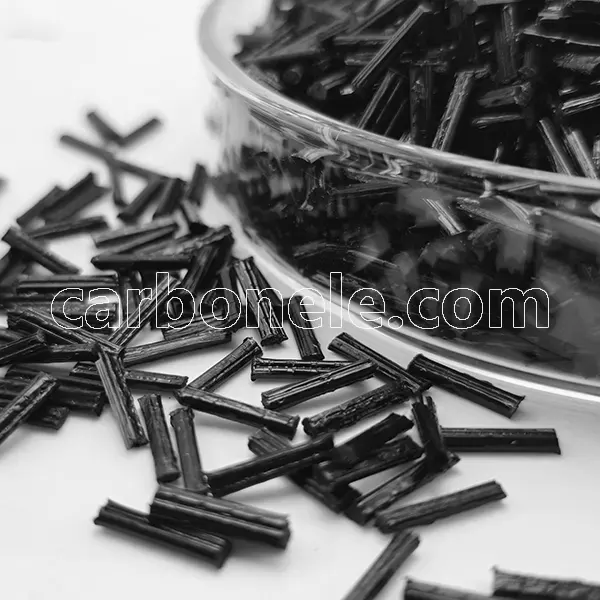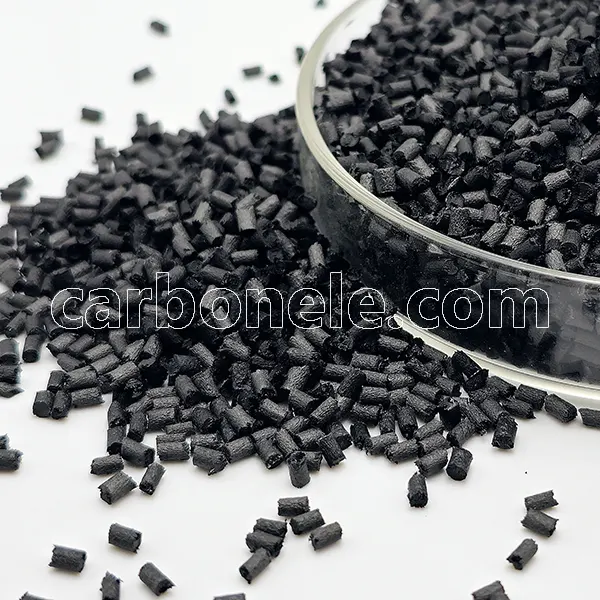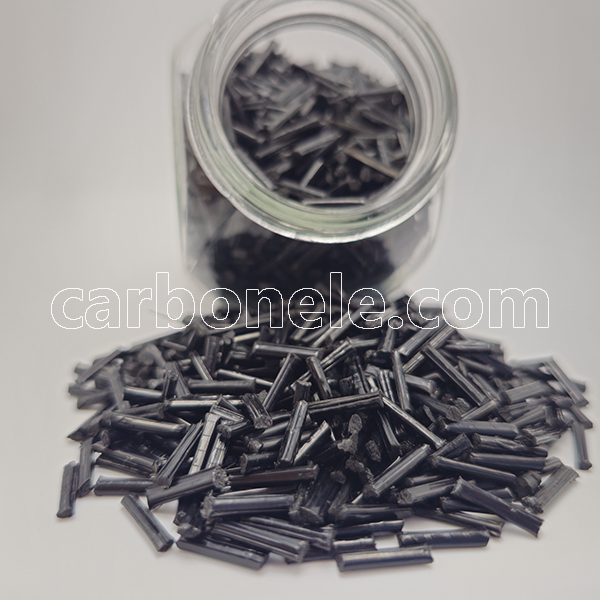
PA66 LCF: The High-performance Material That Will Shape The Future - Carbon Fiber Compounds Manufacturer | Supplier
introduction
Materials science’s progress is fueling technological innovation at an unheard-of pace in the industrial environment of today. Achieving difficult engineering solutions now depends mostly on composite materials, particularly those combining high-performance polymers and reinforcing fibers. In many different sectors PA66 LCF has shown promise as a composite material combining the mechanical strength of long carbon fibers with the chemical stability of polyamide 66. It gives designers and engineers fresh design flexibility in addition to performance not possible from conventional materials.
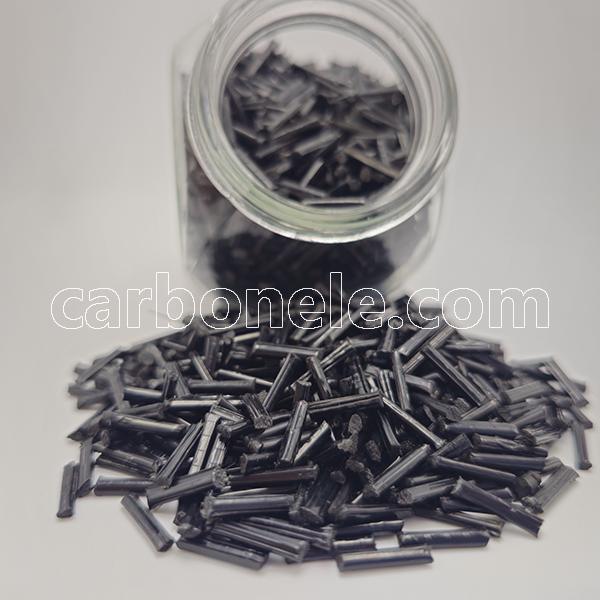
PA66 LCF long carbon fiber reinforced composite material
What are the main advantages of PA66 LCF
With its outstanding performance, PA66 LCF (long fiber reinforced polyamide 66) is a sophisticated technical plastic that shines in many different applications. Among its many benefits is outstanding mechanical strength. When exposed to severe loads and impacts, the reinforcement of long fibers helps PA66 LCF perform better; it also increases durability and stability than standard PA66. Furthermore much enhanced are its rigidity and wear resistance, which fit for industrial components needing great strength and wear resistance.
Apart from mechanical characteristics, PA66 LCF has great thermal stability as one of its salient features. Higher temperatures allow it to retain its physical characteristics, therefore enabling long-term usage in high temperature surroundings free from performance deterioration. For making automobile components, electrical equipment, and other goods needing great thermal stability, PA66 LCF is therefore a perfect material. In general, PA66 LCF’s great strength and thermal stability provide it a broad spectrum of possible benefits in the use of high-performance materials.
PA66 LCF composites: processing techniques
Processing PA66 LCF composites calls for certain techniques to guarantee optimal performance attributes are fully used. First of all, one must choose the correct processing technique. One of the most often employed techniques, injection molding preserves the outstanding mechanical qualities of the material and helps to produce intricate forms. Controlling processing temperature and pressure is essential for this material to guarantee the quality of the resultant good. Generally, in order to avoid flaws in the material during the injection molding process, PA66 LCF calls for high mold temperature and modest injection pressure.
Extrusion molding is another often used processing technique fit for the manufacturing of large strips or tubes. Like injection molding, extrusion molding depends on tight control of temperature and pressure to guarantee the consistent distribution of long fibers in the material, hence enhancing its general strength and stability. Successful manufacturing of high-quality PA66 LCF products depends on maintaining the material’s homogeneity and stability independent of the processing technique used.
How is the lightweight effect of PA66 LCF
Because PA66 LCF has a notable lightweight impact, it is quite common in uses requiring weight loss. Long fibers allow PA66 LCF to greatly lower product weight while preserving the same strength compared to conventional PA66 materials. Given rigorous material weight criteria in the automotive and aviation sectors, which depend on this lightweight effect most especially, Apart from enhancing fuel economy, weight reduction helps to lower equipment running expenses and energy usage.
Furthermore reflecting the lightweight impact is the general material consumption, which not only helps to save manufacturing costs but also enhances product environmental friendliness. The lightweight properties of PA66 LCF provide many businesses ecologically beneficial and effective solutions as environmental protection and sustainable development become more and more importance. Simply said, PA66 LCF’s lightweight property makes it the perfect fit for various uses.
PA66 LCF has what temperature range?
Good high temperature resistance of PA66 LCF enables it function well in high temperature surroundings. Generally speaking, PA66 LCF can keep great physical characteristics at high temperature settings as its temperature range may reach around 200 degrees Celsius. PA66 LCF may be utilized in more demanding surroundings without performance deterioration and has a larger temperature resistance range than standard polyamide materials.
Applications requiring long-term high temperature resistance will find PA66 LCF to be the perfect option because of its outstanding temperature resistance. In high temperature conditions, for instance, it is often utilized to produce automobile engine parts, electrical insulating materials, and other application components. Reliability and safety of the product depend on the capacity to run steadily in high temperature environments. All things considered, PA66 LCF’s temperature resistance range helps it to keep constant performance in many high-temperature uses.
In what ways is PA66 LCF’s lifetime and durability?
Many applications demanding great toughness use PA66 LCF because of its outstanding life and durability. PA66 LCF provides more wear and impact resistance than conventional polyamide materials as long fibers strengthen themselves. This durability not only increases the product’s service life but also lowers maintenance frequency and expense, therefore enabling good performance throughout lengthy usage.
Practically speaking, PA66 LCF is often used to create parts like automobile gears, industrial equipment components, etc. that must resist mechanical stresses and wear over an extended period. These uses call for extremely high material durability, hence PA66 LCF may satisfy these needs and provide long-lasting usage by means of its improved physical qualities. In general, PA66 LCF clearly benefits from its toughness and extended lifespan in demanding uses.
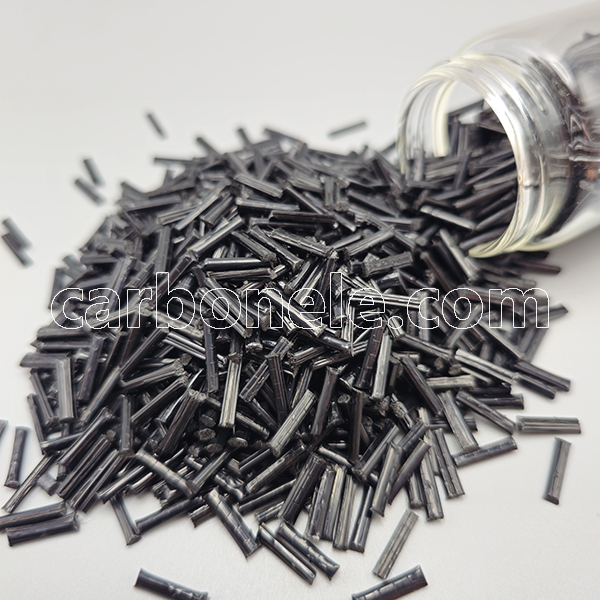
pa66 lcf50 pa66+50%lcf Composites
Conclusion
The many uses and relevance of PA66 LCF composites in contemporary industry. Through its processability, it not only satisfies the strict industrial standards with its lightweight, high strength, temperature resistance and durability but also offers wide area for product innovation. Large-scale manufacturing and technical developments should help to overcome any possible difficulties with terms of material cost and processing technologies. Looking forward, PA66 LCF is predicted to realize its potential in new sectors and advocate industrial design and production to a more efficient and environmentally responsible path. As knowledge of this high-performance material grows, PA66 LCF should become more important in the industrial revolution of future years.
Feature Product
-
PA12 LCF30 for Drone Fuselages & Wings
What do you know about PA12 LCF30? PA12 ...
-
Competitive Price PA6 LCF30 Composites
What’s it? PA6 LCF30, which stands...
-
ABS CF10 Compound ABS 10%CF Thermoplastic Compo...
What’s ABS CF10? ABS CF10 refers t...








